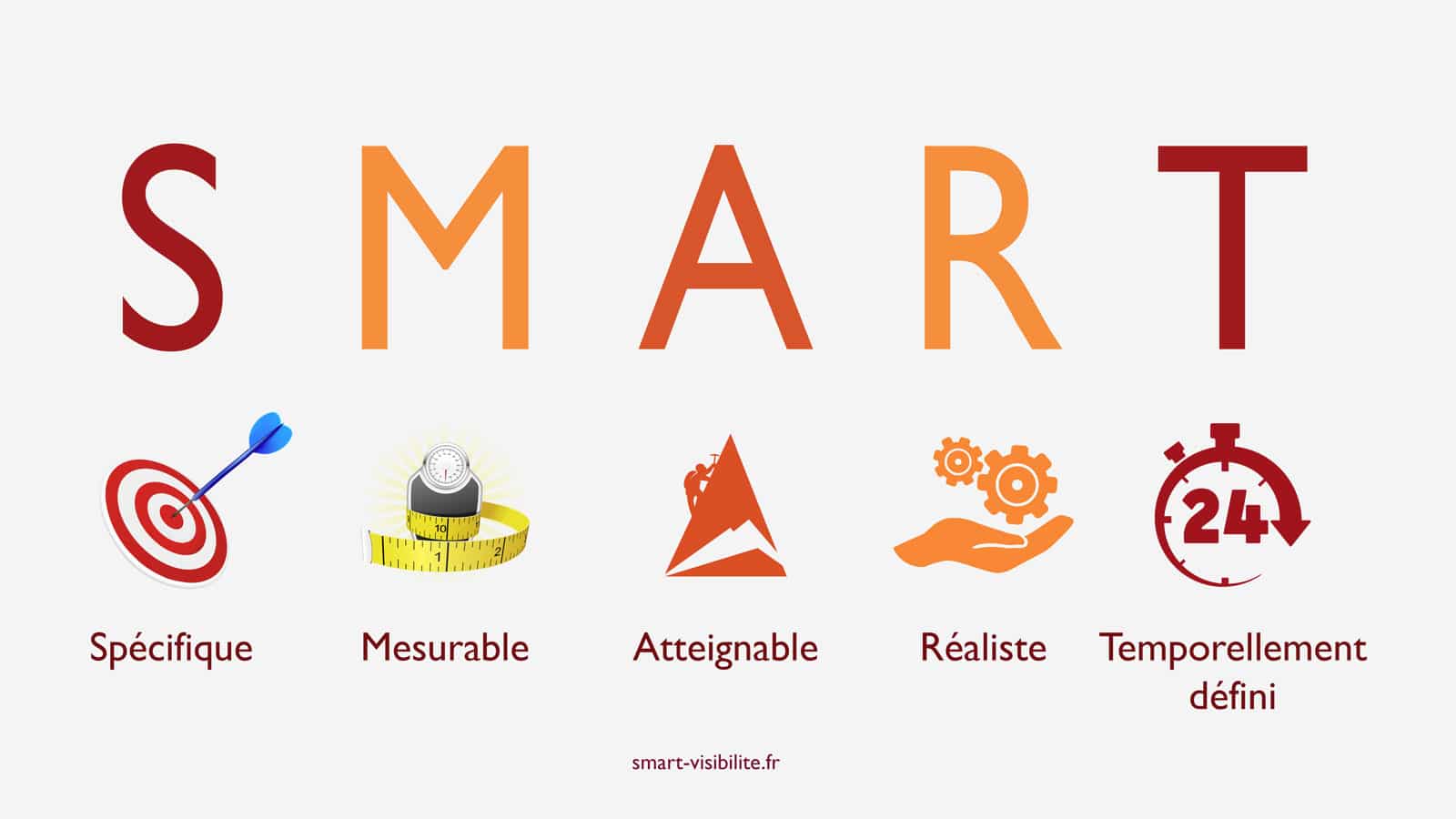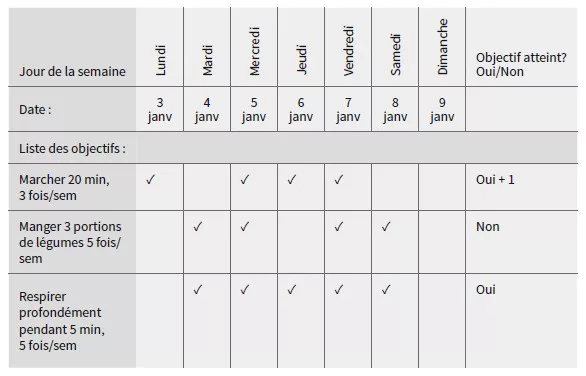Welcome »
Goal setting
Posted by Cyril Grither on June 5, 2023

This section is adapted from the Cardiac Rehabilitation booklet from the Wellness Institute at Seven Oaks Hospital in Winnipeg, Manitoba, 2009.
At the start of the cardiac rehabilitation program, we will ask you to tell us what your goals are. As you know, heart disease is a condition that requires long-term care. For many, goals will be linked to risk factors for heart disease. Some of you will simply want to improve your strength and endurance to resume certain activities.
We will provide you with a report on your risk factors, which will identify possible changes to make. However, it will be up to you to choose the changes you want. In other words, we encourage you to take an active role in your health.
Goal setting is an important part of the change process. In this section, we will help you set realistic goals and develop a realistic action plan to maximize your chances of success. Think of your goals as steps that will help you achieve your goals.
Get off on the right foot
Determine what you want to accomplish. Remember that it should be important to you, not just what other people expect of you.
If you know exactly what you want, you can skip to the section on SMART goals (see page 9). If not, please answer the questions below.
- Make a list of outcomes you want to achieve to improve your heart health.
Take a moment to think about these results and draw a star next to the one you want to achieve first. - Why is this outcome important to you (reasons for change)?
- On a scale of 0 to 10, how important is this change?
0 = Not important at all 3 = Unsure 5 = Somewhat important 8 = Very important 10 = Extremely important 0=Not at all important 3=Unsure 5=Somewhat important 8=Very important 10=Extremely important - Now think about the obstacles that are preventing you from making this change (e.g., situations, thoughts or emotions).
- There are several ways to achieve your goal. Think about what steps you can take to help you achieve this goal. Consider all the possibilities without limiting yourself. Write down all the solutions you can think of, even if you think they are unrealistic. Don’t hesitate to discuss it with others to get their ideas.
- Now choose a solution you would like to try
Next, you need to assess how motivated you are towards the desired outcome. Most lifestyle changes require effort. If you are not willing to make an effort or give up things to achieve your goal, your motivation for the desired outcome may not be sufficient. You risk experiencing disappointment. You may prefer to modify your action plan to achieve this objective or aim for another objective.
However, if you feel that your action plan is still adequate, you may consider seeking support. Some people are able to make this type of change on their own, but for most of us, the support of others can be very helpful. For example, a person who wants the same change and who will accompany you or who will provide reminders for you and monitor your progress, someone who will advise you or who will simply encourage you. Do not hesitate to call on loved ones (family members, friends, colleagues, neighbors).
Who could provide you with support and how?
SMART goals
The next step is to present the desired outcome as an action plan or short-term goals. To do this, think of the word SMART.
Sspecific: What? Determine exactly what you are going to do, be very specific.
Mesurable: How much?
HASachievable: When? Or ? How often ?
Rrealistic/reward leading: It is the confrontation with reality (is this a challenge I can meet?); make sure the outcome is important to you.
Temporels: When will you check your progress?
My action plan
Here is an example :
This week I'm going to walk on a treadmill (what) before dinner (when) at my work gym (where) for 20 minutes (how long) three times a week (how often).
Write down your first action plan.
This week I will:
(What)
(When)
(Or)
(how long)
(how often)
How well do you think you will be able to carry out this plan? On a scale of 0 to 10, how confident are you that you will succeed in carrying out your plan (0 = no confidence and 10 = complete confidence)?
No Trust – Total Trust
0 – – – – – – – – – 1 – – – – – – – – 2 – – – – – – – – 3 – – – – – – – – 4 – – – – – – – – 5 – – – – – – – – 6 – – – – – – – – 7 – – – – – – – – 8 – – – – – – – – 9 – – – – – – – – 1 0
If your answer is seven or more, your plan is probably realistic. But if your score is lower than seven, you should reconsider your plan. Ask yourself why you doubt the success of your plan. What obstacles do you foresee? Think about possible solutions to the problems you fear or modify your plan so that you feel confident about it.
Tracking progress
Congratulations ! You can now implement your action plan. Now it is important to track your progress.
Here is an example of a chart that will allow you to track your progress.

Monitoring results and troubleshooting issues
At the end of each week, check your results. If you are easily reaching your targets, it may be time to revise your goals upwards. Make sure you take it gradually and set realistic goals.
For example, if you have been walking three times for 20 minutes, you can increase the frequency to four or five times for the coming week, but do not immediately increase to seven days a week.
If you have had difficulty achieving your goal, try to determine the cause of your difficulties. Be honest.
- Identify the problem:
- Write down the possible solutions:
- Choose which solution to try:
- Reassess your progress:
- If that fails, try another solution
Keep your momentum
As you begin to achieve your goals, you will need to think about how to stick to them over time.
On a scale of 0 to 10, how confident are you in your ability to maintain these changes for one year (0 = no confidence and 10 = complete confidence)?
No Trust – Total Trust
0 – – – – – – – – – 1 – – – – – – – – 2 – – – – – – – – 3 – – – – – – – – 4 – – – – – – – – 5 – – – – – – – – 6 – – – – – – – – 7 – – – – – – – – 8 – – – – – – – – 9 – – – – – – – – 1 0
Why did you give yourself this score?
What might be the obstacles to maintaining these changes?
What could be the solutions that would allow you to get around these obstacles?
| OBSTACLES | SOLUTIONS |
It's often helpful to think about how the changes you've made have benefited you. This can increase your motivation.
Benefits:
It is also important to reward yourself for your efforts. This can also motivate you to continue your efforts. Think about rewards that won't slow down your progress.
Rewards:
Managing relapses
Occasional relapses are completely normal. Avoid blaming yourself or imagining the worst.
Think about the factors that caused the relapse. Rather than trying to understand why it happened, answer the questions: How? When ? Or ?
What did you do or avoid doing:
- Before the relapse?
- During the relapse?
- After the relapse?
What can you do to quickly get back on the right foot? Set short-term goals.
What can you do differently in the future?
Try to identify situations that pose a high risk of relapse and make a plan to address them.
It takes time to change behavior. Be patient. If you don't achieve your goals the first time, try again and do things a little differently.
It is very important to celebrate your small victories along the way.